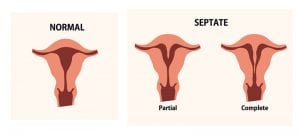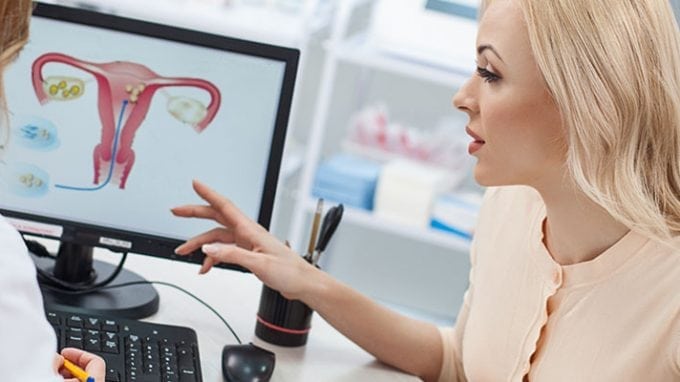A septate uterus is the most common Müllerian anomaly, and is the uterine malformation associated with the poorest reproductive outcomes. As scary as that sounds, there are effective methods for managing the fertility problems that are caused by a septate uterus.
A septate uterus is a type of congenital uterine abnormality that many women are born with. When the uterus is being formed, two ducts join together in the fetus. If anything goes wrong in this process, a wall of tissue may be left that divides the uterus into two separate spaces. This abnormality typically does not cause any issues before a woman is pregnant, so many women do not even realize that they have a septate uterus. Roughly three to seven percent of all women have at least a partial septate uterus, and once pregnancy occurs, it can cause some problems.
What Is a Septate Uterus’ Effect on Conception?
A septate uterus does not technically impact a woman’s ability to get fertilized eggs. It has no effect on either the quality of a woman’s eggs or the sperm’s ability to reach these eggs. Women with septate uterus typically have a normal ovulation and menstrual cycle. While the condition does not affect a woman’s ability to conceive, it can cause some issues when it comes to implantation and impact a pregnancy’s outcome.

How Does a Septate Uterus Affect a Pregnancy?
Though it is possible to conceive with a septate uterus, this condition has the highest chance of a poor reproductive outcome compared to other uterine malformations. A septate uterus does not always contain enough space for a fetus to properly grow, and it is difficult for a fetus to grow if it implants on the septum itself. This can lead to spontaneous miscarriages or pre-term labor. There is also a significantly higher risk of malpresentation, which can make labor much riskier. If a woman has a septate uterus, she may be able to conceive and give birth to a healthy child, but it is more likely that she will suffer from recurrent miscarriages.
Typically, the risk associated with a septate uterus will depend on the size of the septum. Women with a fully septate uterus tend to have a harder time than those who only have a small portion of the septum remaining.
Can You Treat a Septate Uterus to Improve Fertility?
A septate uterus can have a devastating effect on fertility, but this does not mean that the situation is hopeless for women with this condition. A septate uterus is incredibly common, so doctors have been able to develop very effective methods for treating it. If the septate uterus is not discovered until a woman is already pregnant, she will require special care and monitoring during her nine-month journey, but there is still a good chance a woman can safely give birth.
If the woman has been dealing with recurrent miscarriages, she can get a hysteroscopic septoplasty. This a surgical procedure that will involve removing the septum. Recovery is fairly rapid, and women may be able to get pregnant within just a few months of the surgery.




